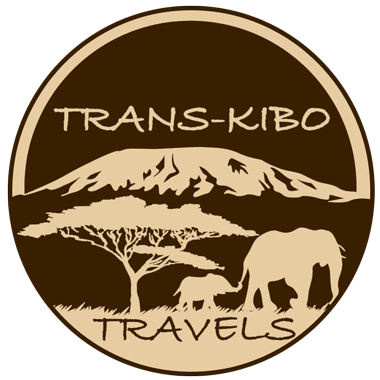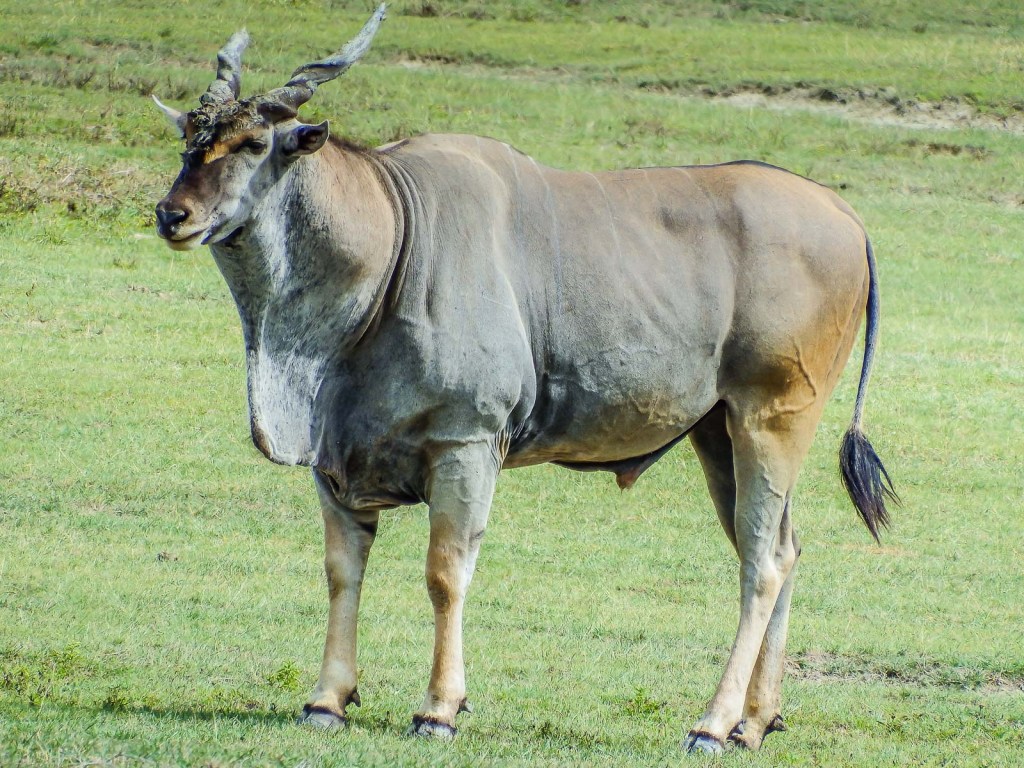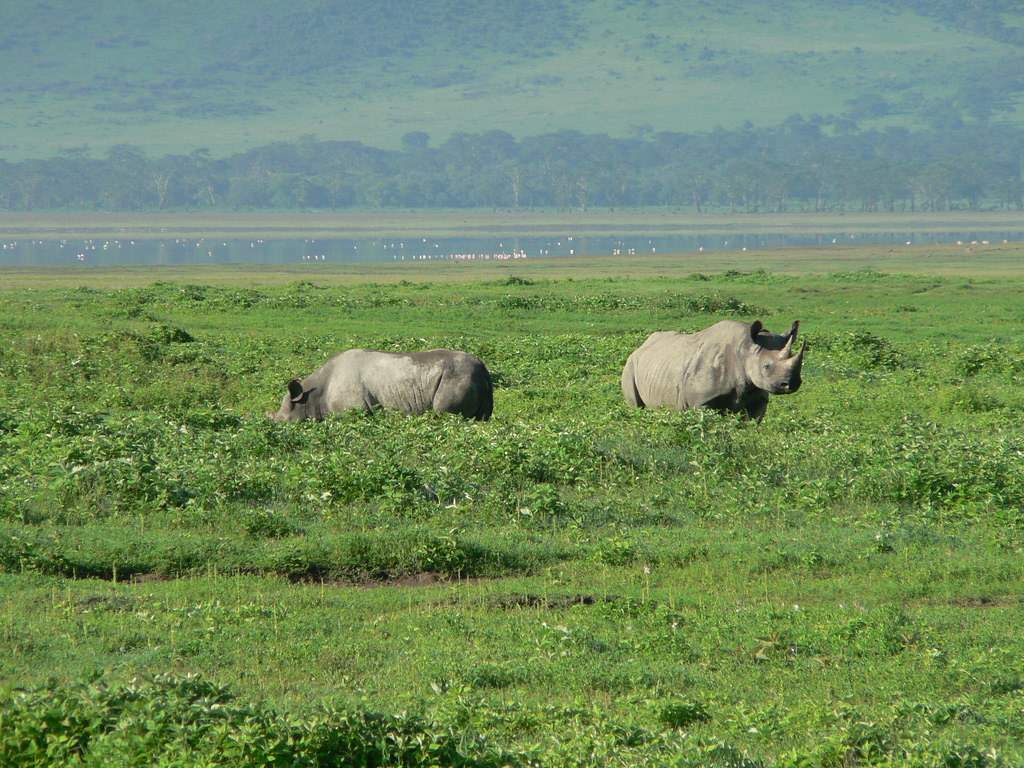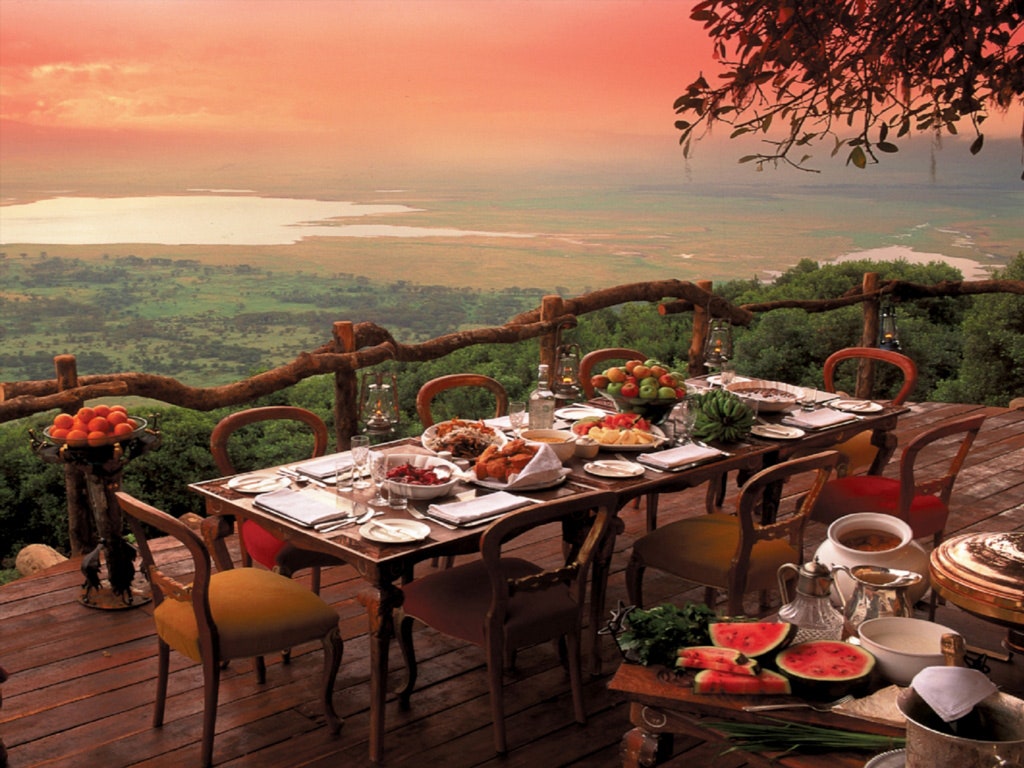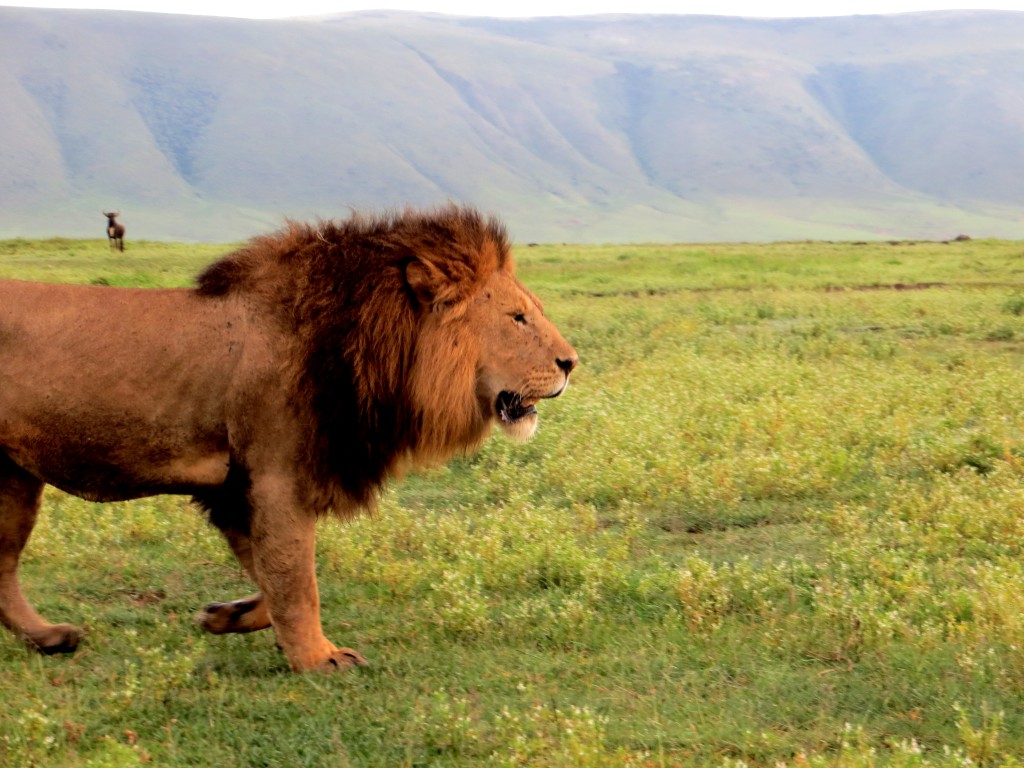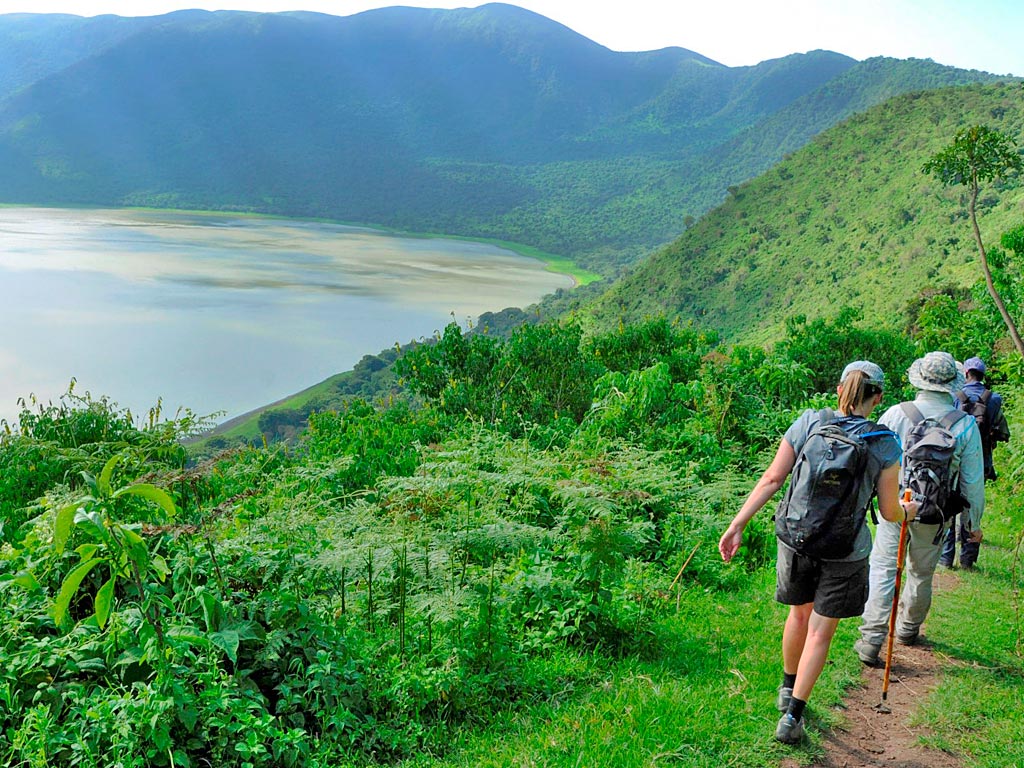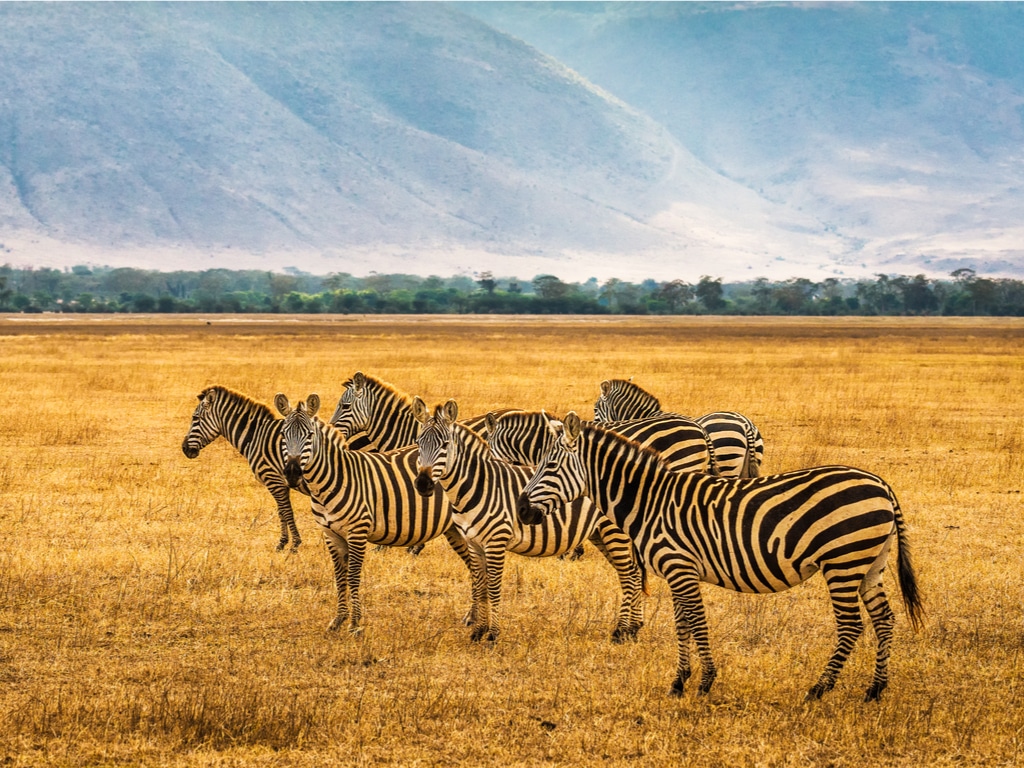A very long time ago, Ngorongoro Peak towered almost as high as Kilimanjaro. Both of these mountains used to form the highest peaks in Africa. The Ngorongoro Peak collapsed beneath the volcano to form a caldera, the largest unbroken and unflooded in the world today. Although a geological feature formed by the withdrawal of a molten in this manner is correctly called a caldera, many people traditionally used the term crater, and hence Ngorongoro Caldera is described as a crater in all records available.
The animals make the Ngorongoro Crater one of Africa’s major attractions. The crater is also known as “The eighth wonder of the world”. Around 300,000 animals live in the bottom of the crater, the number changes with seasons, because some animals migrate towards the Serengeti. The largest group is the wildebeests, but there are plenty of zebras, gazelles and buffaloes. In the forests and the swamped areas one can find hippos, rhinos, elephants, waterbucks, baboons and monkeys. Ngorongoro is one of the few places you are quite sure of spotting a rhino. In the 1960`s the crater had one hundred rhinos permanently living there, but because of poaching, the number was decreased to under twenty in a few years. Now the illegal shooting appears to be under control, so the number of rhinos are stable and even rising. The rhinos are protected by a number of rangers, and the is ” it is better that ten rangers die protecting the rhinos, than one rhino being shot.”
There are also ideal circumstances for the predators living in the crater. With around one hundred lions and four hundred hyenas, the crater has the largest number per square kilometer in East Africa. Among the male lions one can find a number of black-manned ones. There are also good chances of spotting jackals and serval cats, who hunt in the swamps and close to the waterholes. In Ngorongoro you have the best chance of spotting the “Big Five”, namely lion, leopard, buffalo, elephant and rhino.
In the flat, open surroundings the animals are easy to spot, and they are more used to cars than animals in Serengeti and other national parks. This means that one can come quite close to the animals with the camera. The only thing, which might ruin the experience, is to come inside the crater with far too high expectations. You can’t find rhinos on every road-turn, and the lions are not paid to hunt while the tourists watch and take photos.
It takes a Land Rover or another 4-wheel-drive to manage the steep road descending and ascending the crater. It is a good idea to start at sunrise, so one can spend the entire day inside the crater. Most people prefer to have lunch at the picnic-area in the crater, where the vultures dive and sometimes manage to snatch the food out of your hands.
The Ngorongoro Crater is a part of the Ngorongoro Conservation Area which consists of several volcanic mountains and craters – altogether an area of 8288 square kilometers. Until 1959 this area was a part of Serengeti National Park. Out of consideration to the local Maasai, it changed its status, so that it now both protect the animals and the rights of the Maasai: They are allowed to take their cattle down the crater to get water, but they can not stay inside permanently. The cattle must get out of the crater the very same day.
From Arusha it is about 180km (4-5 hours depending on the road) to the Ngorongoro crater. Follow the road to Serengeti past Lake Manyara through the trading city Karatu. The first view over the crater is at Heroes Point (2286m). Here there is a monument dedicated to the park employees, who have been killed in the battle against poachers. A little further you find a monument over the German professor Bernhard Grzimek and his son Michael, who with their scientific work, movies and books contributed greatly to promoting the nature of Northern Tanzania. Michael was killed in a plane accident in Ngorongoro in 1959.
